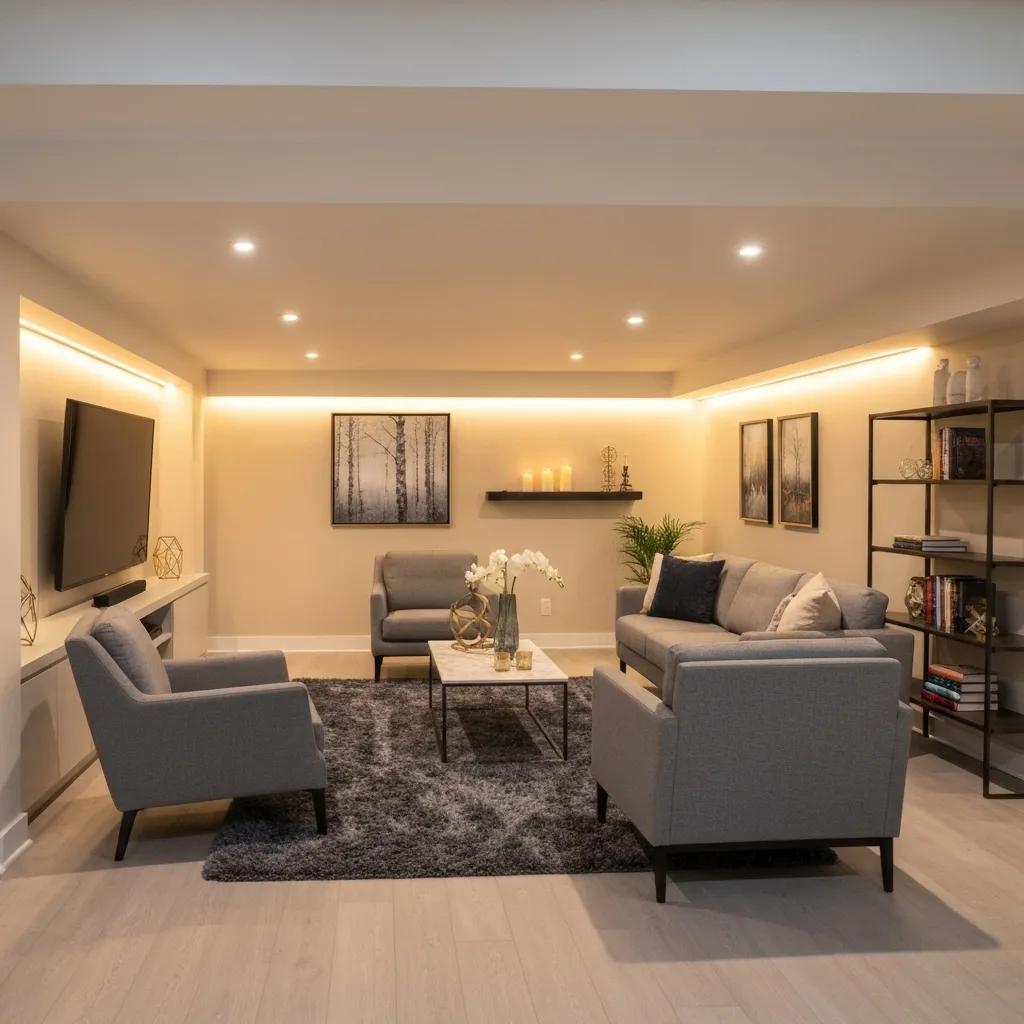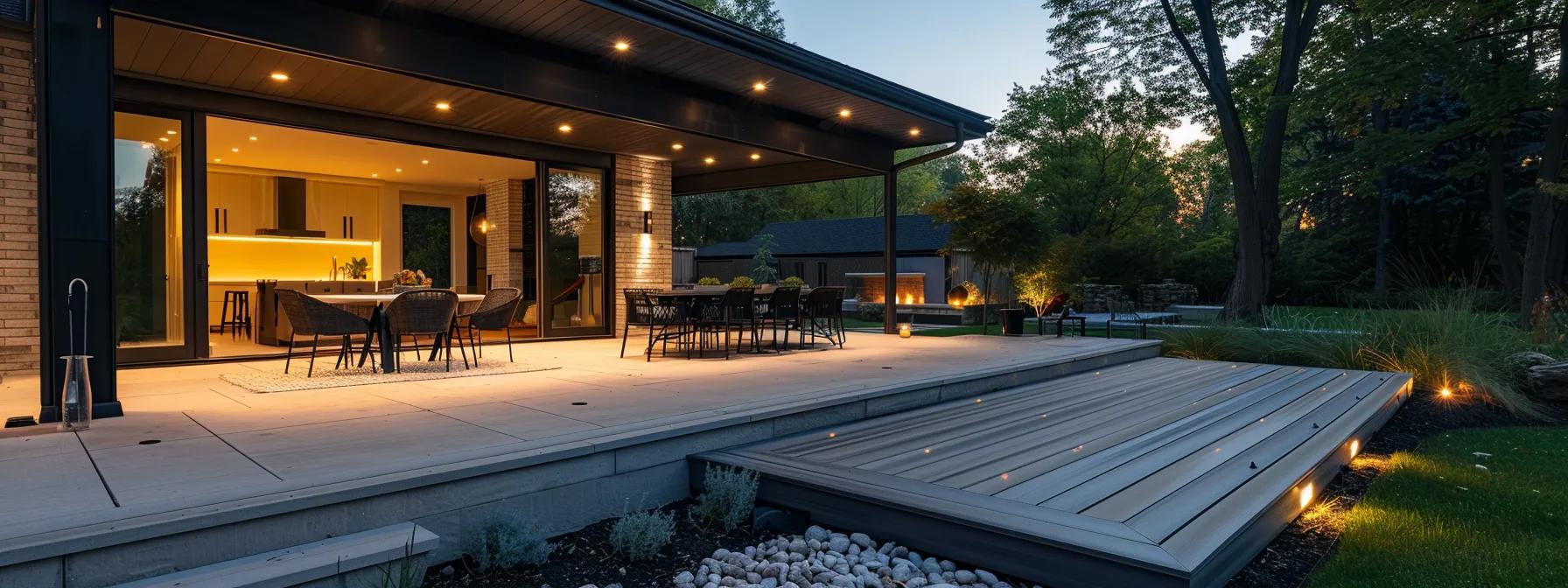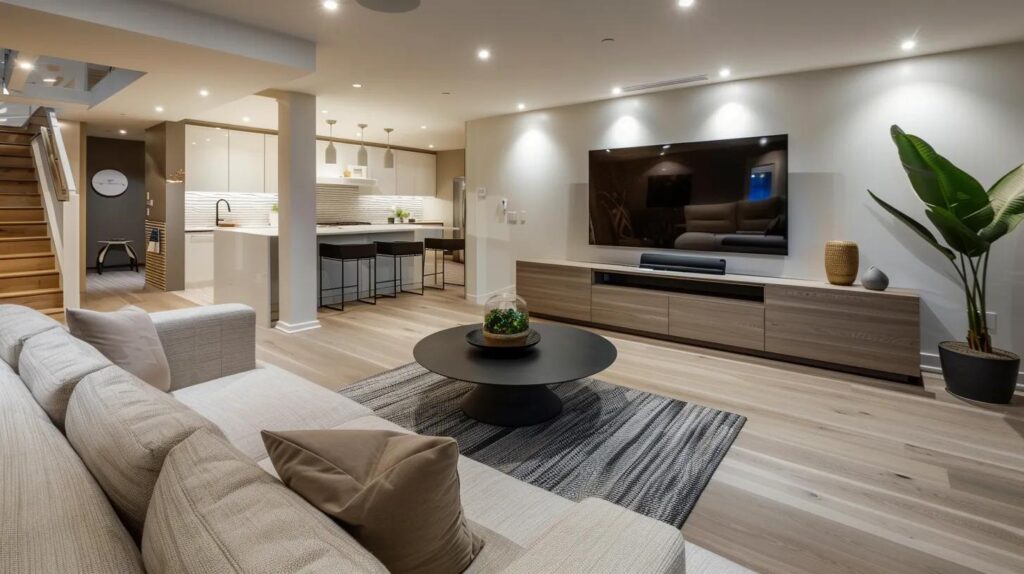
How to Maximize Space in Your Basement Renovation
Renovating a basement provides homeowners with the opportunity to add valuable living space and enhance their property’s functionality and appeal. Creating a space that is both aesthetically pleasing and highly functional requires thoughtful design, smart storage solutions, and efficient construction techniques. This article discusses how to plan your basement layout, incorporate effective storage, choose the right materials and lighting, and navigate legal and budget considerations. Des Moines homeowners can optimize their basement renovations by utilizing practical tips and expert strategies to ensure every square foot is put to use.
Key Takeaways
- Basements can become multi-functional spaces through smart layout planning and creative design.
- Effective storage solutions and proper material choices enhance space utilization and energy efficiency.
- Lighting, legal requirements, and budgeting must be carefully considered.
- DIY approaches have benefits, but professional contractors may be best for complex projects.
How Can You Plan Your Basement Layout to Maximize Usable Space?
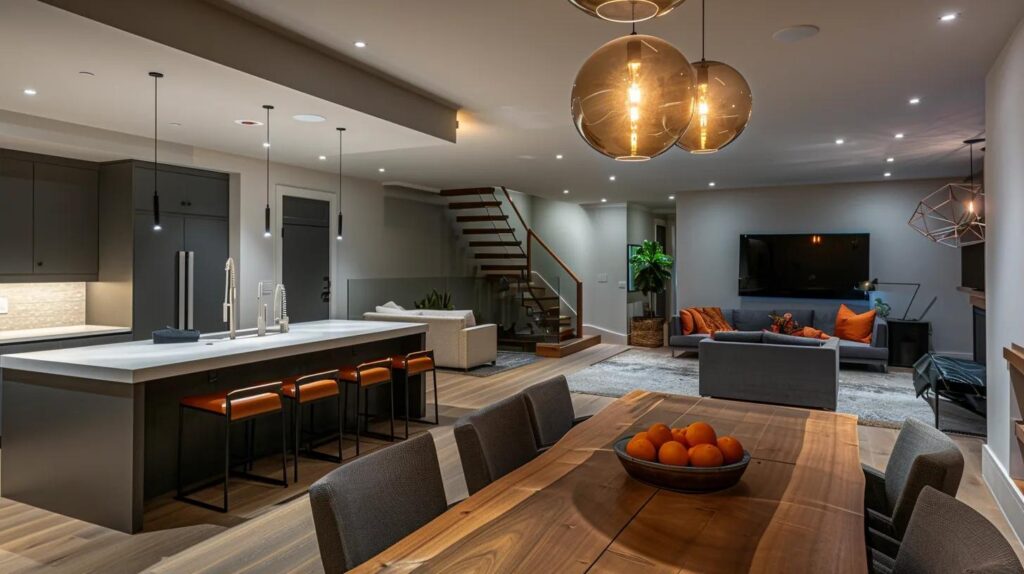
Begin with a clear floor plan that zones living areas, bedrooms, storage—including options such as basement finishing des moines—and recreation. In underused areas, creative design elements like mezzanines and built-in furniture improve flow and functionality.
What Are the Best Basement Layout Ideas for Small and Narrow Spaces?
For small or narrow basements, open floor plans paired with multi-functional furniture and floor-to-ceiling storage units work best, with basement finishing des moines adding an extra layer of functionality. Built-in benches with storage, foldable tables, and wall-mounted desks help save space, while sliding or pocket doors preserve every inch for better navigation.
How Do Multi-Functional Basement Designs Save Space?
Multi-functional designs integrate elements that serve two or more purposes. For instance, a home office can double as a guest room with convertible furniture, and dining areas can serve as workspaces. A well-planned layout keeps pathways clear, enhancing safety and overall aesthetics.
Which Basement Design Considerations Affect Space Optimization?
Consider ceiling height, natural light, moisture control, and general flow of the area. Proper insulation and moisture barriers may allow for higher ceiling installations without sacrificing energy efficiency. Early planning for electrical and plumbing access prevents later modifications that could waste valuable space.
What Are Effective Space-Saving Storage Solutions for Basements?
Effective storage is key in a remodeled basement. Built-in storage solutions like custom shelving, hidden under-stair compartments, and modular cabinetry prevent clutter and create inviting living areas.
How Do Built-in Shelving and Cabinets Maximize Basement Storage?
Built-in shelving and wall-mounted cabinets utilize vertical space to free up the floor. Floor-to-ceiling units integrated into the design can store books, awards, storage bins, or seasonal items, keeping the basement both tidy and efficient.
What Are the Best Tips for Organizing Basement Storage Areas?
Organize by categorizing items, using clear bins with labels, and creating zones for seasonal, hobby, or emergency items. Regular decluttering and modular furniture with hidden compartments further enhance storage efficiency. Adjustable shelving can be reconfigured as storage needs evolve.
How Can You Incorporate Hidden or Under-Stair Storage?
Use hidden solutions like drawers within stair risers or compartments under benches to utilize wasted areas effectively. Under-stair storage not only adds function but also maintains a visually uncluttered appearance, provided these features are integrated from the initial planning stage.
Which Materials and Construction Techniques Help Maximize Basement Space?
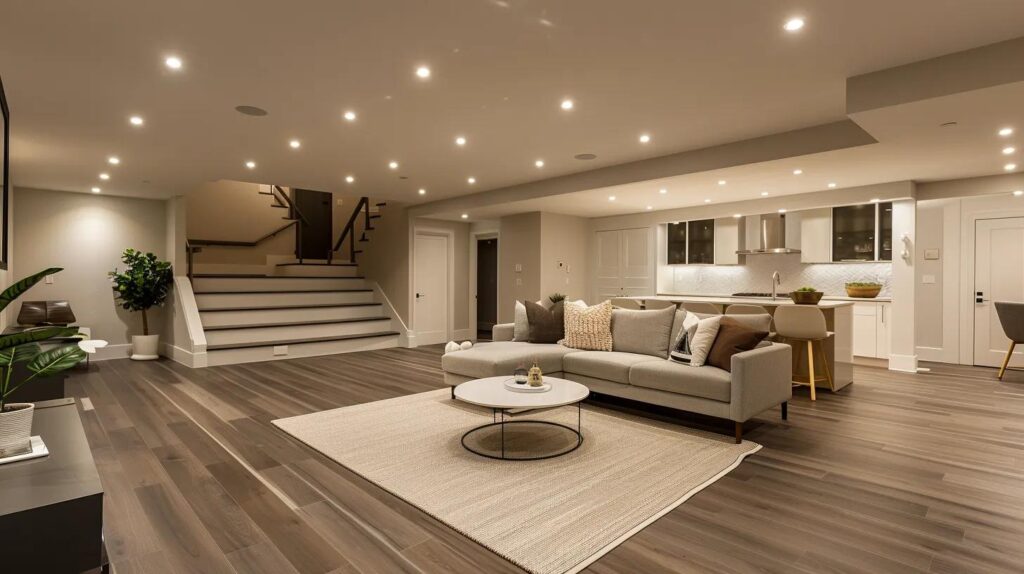
Choosing the right materials is crucial for durability, energy efficiency, and a spacious look. Low-profile insulation, moisture-resistant drywall, and engineered flooring contribute to space optimization and greater longevity, protecting the basement from dampness and mold growth.
How Does Choosing the Right Insulation Improve Space and Energy Efficiency?
Thermal insulation minimizes energy loss and controls humidity—vital in damp basements. Materials like spray foam or rigid foam boards improve energy efficiency and allow for thinner wall constructions, thus increasing available space while maintaining a consistent environmental temperature.
What Are the Best Flooring Options for Small Basements?
Flooring can visually expand a space. Vinyl plank, engineered hardwood, or polished concrete floors are durable, moisture-resistant, and modern in appearance. They handle humidity and temperature fluctuations well, contributing to a streamlined look that enhances space perception.
How Can Drywall Installation Be Optimized for Basement Space?
Optimized drywall installation uses moisture-resistant panels and strategic seams that work with built-in storage or paneling. Minimally thick drywall with secure structural integrity creates more room within the ceiling cavity for insulation and wiring, which is especially beneficial in lower-ceiling basements.
How Can Lighting Design Enhance the Perception of Space in Your Basement?
Strategic lighting dramatically changes the ambiance and perceived size of a basement. Well-placed lighting fixtures reduce shadows, creating an open and welcoming environment. Energy-efficient LED lighting is favored for its low heat, long lifespan, and high illumination output, which make dark basements appear more spacious. For more information about basement finishing, check our services.
What Types of Lighting Are Best for Small or Low-Ceiling Basements?
In basements with limited ceiling height, recessed lighting, wall sconces, and under-cabinet lights offer high illumination without occupying space. These options prevent bulky fixtures from lowering the ceiling’s visual height. LED strip lights behind shelving or under steps add depth and continuity to the design. basement finishing mistakes
How Do Energy-Efficient Lighting Options Support Basement Renovations?
Energy-efficient LED and CFL bulbs cut down on energy consumption and produce minimal heat. Their long lifespans combined with smart lighting systems mean the basin can be adjusted to suit various activities, ensuring a consistently bright and inviting living environment.
What Are the Key Legal Requirements to Consider When Finishing Your Basement?
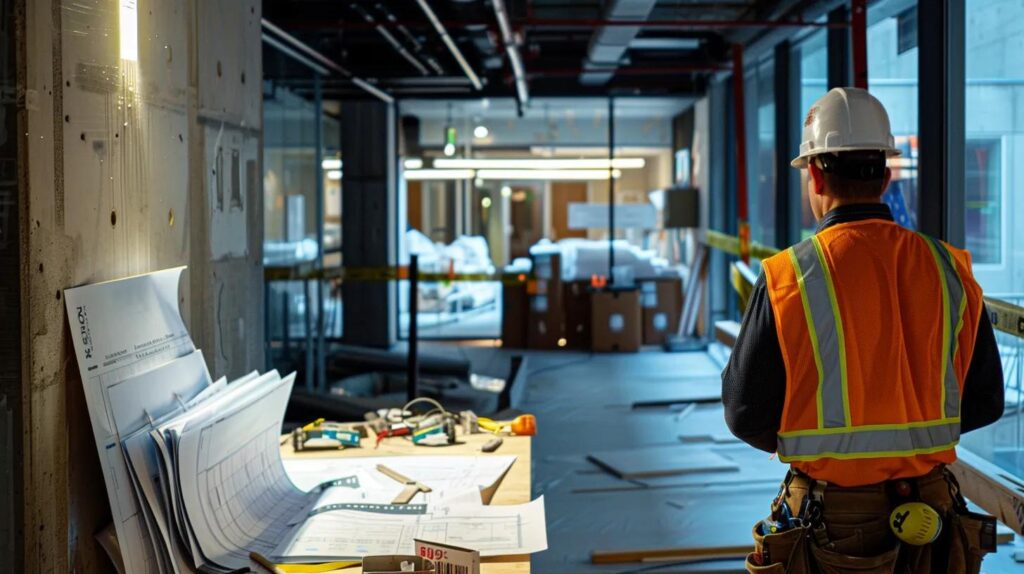
Compliance with local building codes and permit regulations is critical. These regulations ensure safety and proper standards, including minimum ceiling heights, egress requirements, and correct electrical and plumbing installations. Consulting with local authorities or a contractor prevents legal issues and costly later modifications.
When Do You Need Permits for Basement Renovations?
Permits are required for structural changes, adding egress windows, or modifying electrical and plumbing systems. In Des Moines, Iowa, any substantial basement renovation requires a permit to meet current safety codes. Always check with your local building department and submit detailed plans before starting work.
How Do Local Building Codes Affect Basement Space Planning?
Local building codes set safety, accessibility, and energy efficiency standards such as ceiling heights and fire safety measures. Non-compliance could lead to fines or forced modifications. Working with experienced professionals familiar with these codes helps ensure the design maximizes space without compromising safety or legality.
How Can You Budget Effectively While Maximizing Basement Space?
A detailed budget is essential to allocate funds appropriately without compromising quality. Understanding costs for materials, labor, permits, and unforeseen expenses helps balance cost-effective solutions with long-lasting renovations that improve both space utilization and home value.
What Are Typical Costs for DIY Basement Finishing Projects?
DIY basement finishing in Des Moines may range from moderate to high based on scope. On average, homeowners might invest between $15,000 to $40,000 for a comprehensive remodel that maximizes space and functionality with materials like drywall, flooring, plumbing, and insulation.
How Can You Save Money Without Sacrificing Space Optimization?
Savings come from careful planning, price comparisons, and phased renovations. Buying materials in bulk and reusing what you can help reduce costs. Choosing multi-functional components and energy-efficient fixtures also lowers long-term operating expenses. DIY work where feasible, paired with professional advice for challenging parts, balances cost and performance.
Should You Choose DIY or Hire Professionals for Your Basement Renovation?
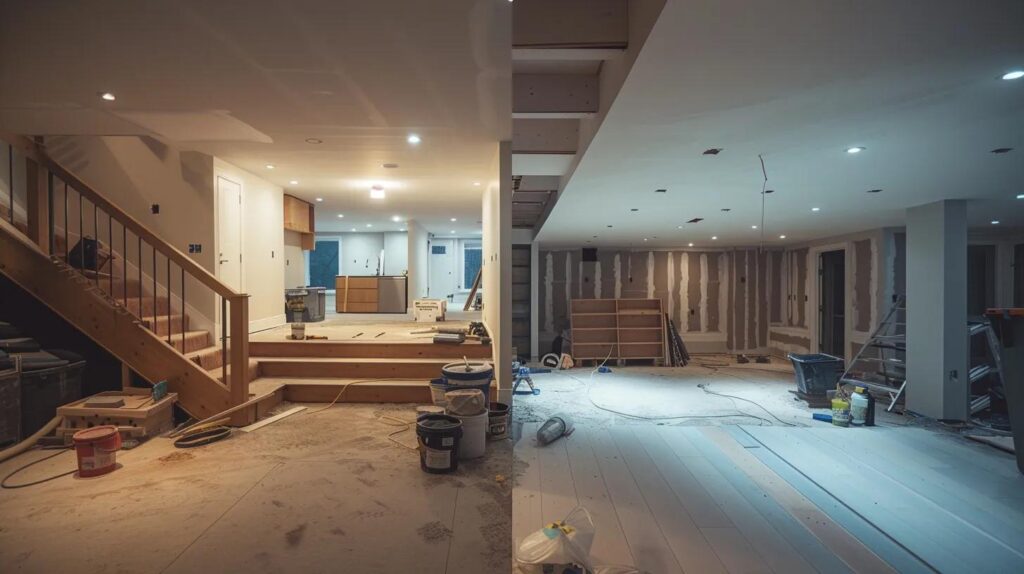
Deciding between DIY and professional help depends on project complexity and personal expertise. DIY offers creative control and potential labor savings but carries risks if not done correctly. Professionals provide specialized skills, ensuring compliance with codes and optimizing space efficiently. DIY and professional basement finishing options
What Are the Pros and Cons of DIY Basement Finishing?
DIY projects save on labor costs and allow for personal touches, but require a significant time investment and understanding of construction. Mistakes can lead to rework or code violations, meaning the finish may lack polish compared to a professional job.
When Is It Better to Hire a Basement Renovation Contractor?
For projects involving structural changes, intricate designs, or precise code requirements, hiring a contractor is advisable. Professionals bring experience, foresee potential issues, and use cost-saving measures that optimize functionality and aesthetics.
Frequently Asked Questions
Q: How do I start planning my basement layout? A: Begin with a clear floor plan that outlines zones for living, storage, and other functions. Use multi-functional furniture and vertical storage to maximize space.
Q: What materials work best for a moisture-prone basement? A: Choose moisture-resistant drywall, engineered flooring, and high-performance insulation to prevent dampness and boost energy efficiency.
Q: Are permits required for basement renovations in Des Moines? A: Yes, permits are typically needed for structural changes, electrical, or plumbing work to comply with local building codes.
Q: How long does it take to complete a basement renovation? A: The timeline varies with project scope—a full renovation can take from several weeks to a few months depending on complexity and contractor availability.
Q: Should I do the renovation myself or hire professionals? A: For simpler projects, DIY might be cost-effective; however, for complex renovations with structural changes, hiring professionals is recommended to ensure safety and quality.
Final Thoughts
Maximizing space in a basement renovation requires smart planning, careful material choices, and efficient storage solutions to balance functionality with design. Homeowners in Des Moines and nearby areas can improve their living environment by addressing legal, budget, and DIY-versus-professional considerations upfront. With expert guidance and thoughtful planning, basements can be transformed into comfortable, versatile spaces that significantly enhance home value. This guide provides a solid foundation for a renovated basement that meets both practical and aesthetic needs.

